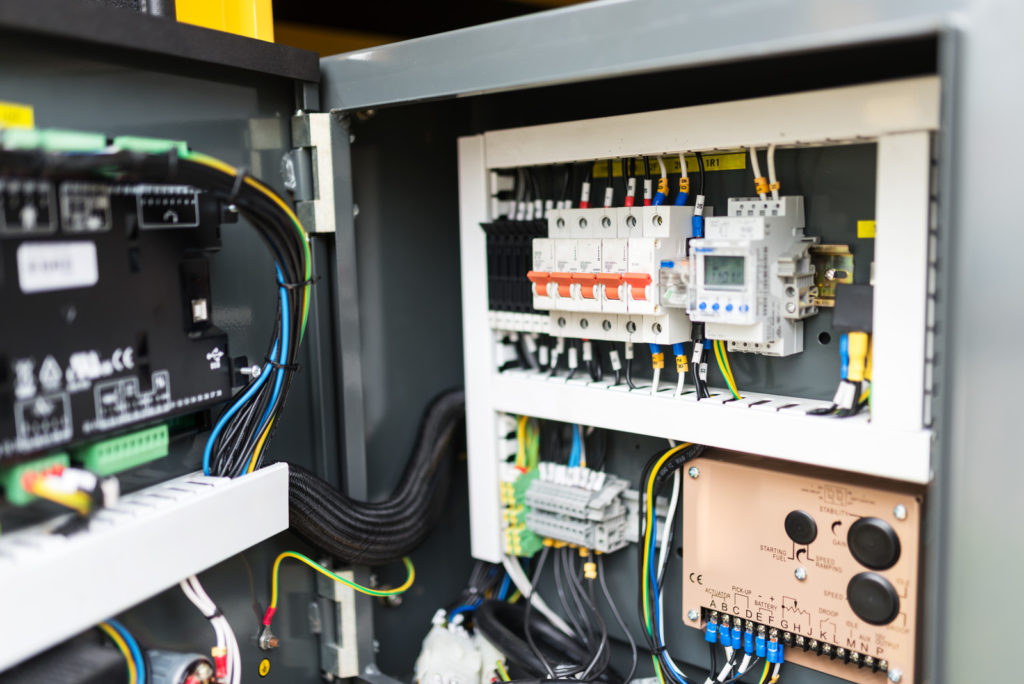What are the differences electronically between an AC and a DC drive?
DC Drives:
In general, a DC drive converts an Alternating Current (AC) into Direct Current (DC) to run a DC motor. Most DC drives use a couple of thyristors (also known as SCR’s) to create a half cycle of DC output from a single phase AC input (known as half bridge method). The more advanced ones use 6 SCR’s to generate a DC output from a 3 phase AC input (known as full-bridge). So in the full-bridge method we have two SCRs for any input phase.
An SCR is like a “one direction” switch which is controlled by the gate input. By applying low voltage to the gates the SCR turns on. Applying the voltage to the gate at a different angle of the input phase, the output current varies and thus the drive can control the motor speed. To verify the motor speed, and compensate if necessary, most DC drives require the motor to have a tachometer as a feedback. A tachometer or “tach” is basically is a small permanent magnet DC motor coupled to the main motor’s shaft. Higher motor speed generates more voltage in the tachometer and the drive references this voltage to make sure the motor is running at the correct speed per user settings. Smaller DC motors have a permanent magnet field while larger DC motors have a separate coil inside the motor, known as field, which eliminates the need of a permanent magnet (which are expensive to construct) in the motor. DC drives with field output usually have a separate smaller circuit to supply the field coil.
AC Drives:
At the input side an AC drive resembles a DC drive in that an Alternating Current (AC) input is regulated to DC by SCRs or a simple Bridge rectifier. This DC output would be a half cycle according to AC input phase frequency so AC drives use a capacitor bank to stabilize and smooth this DC voltage. Then in the output section of the drive, by means of 6 output transistor or IGBT modules, power is supplied to the motor. Simply speaking, the drive converts the AC input current to DC and again converts this DC to back to AC to supply the motor. I know what you may be asking; why does the drive convert the current twice? The answer is the AC input is either 50 or 60 hertz cycles. When the drive converts the produced DC voltage to AC again, it uses a carrier frequency of at least 2 KHZ to 100 KHZ in more sophisticated drives. Thus the output current can be raised easily tens or hundreds of times without burning up the motor coil. This function also allows the AC motor to rapidly switch speeds without any problems. AC drives often have various kinds of feedbacks from simple 2 line incremental encoders, to resolvers or absolute encoders with a very high resolution that help the drive to calculate motor shaft speed and angle precisely and very accurately. On some larger horsepower drives, there is a third circuit called regeneration. When the motor transitions from a very high speed to lower (or even zero speed) in a short time, this circuit converts the inertia of the motor and load to AC power and transfers it back to the input lines. This saves on power and results in better energy efficiency.
Comparison:
Though the DC drives are famous for providing high start up torque, having simple circuits and are good for applications with constant speed, they are also believed to have more problems especially because of the requirement of commutators and brush assemblies in the DC Motors (which require lots of maintenance, can wear over time and often have mechanical problems). On the other hand AC drives are more energy sufficient and they can handle rapid speed changes better because of running induction motors. They often have hundreds of different programmable parameters for failsafe protections. Even though this makes the AC drive more complicated in a lot of ways, advancements in programming software provided by drive manufacturers is making them easier than ever to install and use.
Though in the past DC drives were often utilized due to their simplicity, most machine manufacturers now prefer to use AC drives (especially for servo applications). The complexity of an AC drive has been simplified over time and has many advantages. From the ability to be controlled on a network, ease of monitoring and simple transference of all data and parameters to a new drive in case you need to replace a unit.
Please share your comments or questions with us below and be sure to visit www.gesrepair.com or call us at 1-877-249-1701 to learn more about our repair services. We’re proud to offer Complete Repair and Maintenance on all types of Industrial Electronics, Servo Motors, AC and DC Motors, Hydraulics and Pneumatics. Please subscribe to our YouTube page, Like Us on Facebook! Thank you!

great insight. Would love to write a guest post for ya. Let me know. Thanks
Hello,
We would love for you to write a guest blog! Please email me at dpetersongesrepair.com Thank you!